黎雄才,庚戌年生于肇庆,祖籍岭南画派重镇高要。幼年展才,于广州烈风美术学堂习画有得。画作雄浑自成,尤擅巨幅山水与花鸟草虫,以山水画名扬四海,世称“黎家山水”。早年受高剑父启蒙,然不拘师承,融古今之法,自成风格。其焦墨渴笔,笔触老辣,画风刚健,气韵宏大,尽显山川气象。常写青山绿水,气势清旷,千峰竞秀,烟云氤氲,咫尺千里,观者如临其境。其画非仅写景,更为意境深远之珍品,另世人瞩目。

黎氏于山水画领域自辟蹊径。曾旅居东瀛,取法“朦胧体”,归国融入传统,笔墨苍劲,渲染细腻,远近景色皆层次分明。岭南画派主张折衷中外,黎氏不拘一法,偏爱强劲笔法新开画境,多变笔墨营造丰富效果。其画既承传统,且融新思,开创山水画新篇。
《江西行洲河畔》一画,黎雄才已成自家笔墨语言,控水分于精妙,笔法极尽挥洒,个性彰显。其山水创作多以写生为主,画面真实亲切。如《山村暮雪》巧用墨与赭石,寒天意境自然而出,即非荒凉冬景,观者亦感暖意。黎氏性情,溢于笔端,挥写之趣,尽显山水神韵。“黎家山水”非仅为一风格称谓,更涵广义。其描青绿山水,意境清华,形象美丽,色彩鲜明,成“黎家山水”之标志。
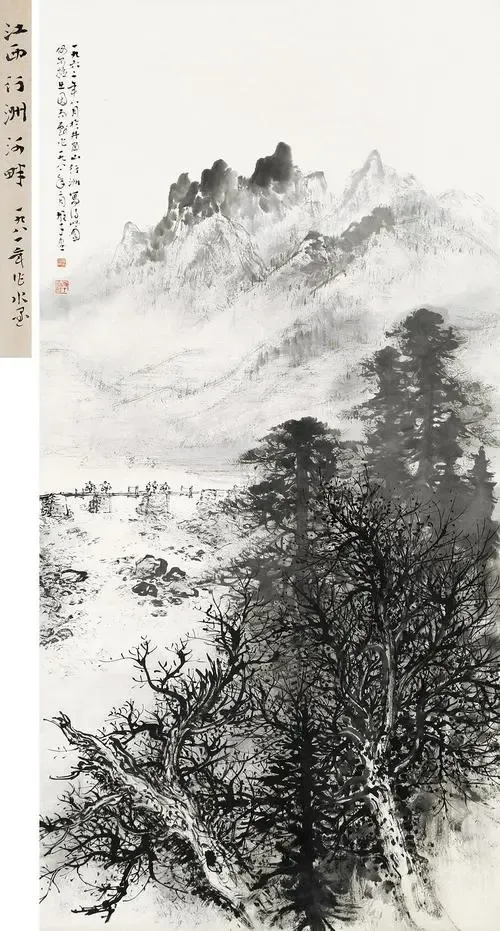

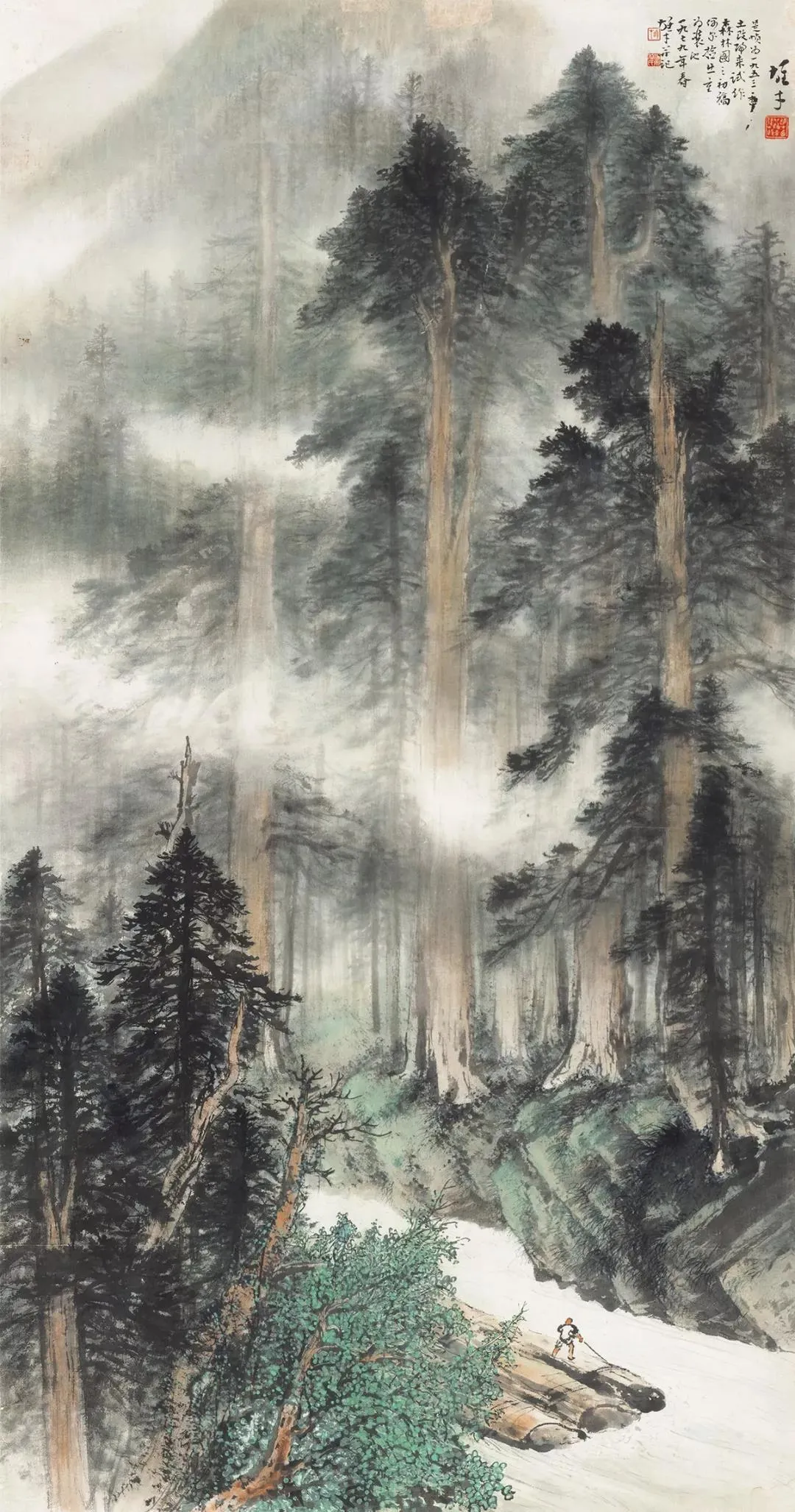
黎氏画风虽承岭南,然自辟蹊径,门人亦随之出岭南画派,另创一派。晚年亦有新突破,厚青绿与粗笔深墨相融,于八十四岁时作《轻舟已过万重山》再展其主张:“重彩淡彩,皆以墨为主。”墨稿之上,加敷石青石绿,色彩混合,青绿运用更趋变化。画面景物幽光氤氲,气象万千。画成落款,仍叹表达有限,难尽中国画之文化气息。然黎氏之力能辨中西优劣,使山水画不拘社会背景,更于艺术推陈出新,发扬光大。
黎雄才于教学中常训学生:“师承古法,勿弃前人之道;然古法不应滞而不前。绘事须求纯粹。国画异于摄影,需展宣纸、毛笔、水墨、颜料之特殊韵味,予人艺术感染。”黎氏对中国画,尤对山水之探索与实践,前所未有,开拓创新,堪称一代宗师。黎雄才之艺术成就,不囿于国内,其《潇湘夜雨》三十年代初荣获比利时国际博览会金奖,甲午年创作《武汉防汛图卷》,誉为“抗洪史诗”,进一步奠定其美术界地位。黎氏以卓越造诣与对国画之执着,成为中国画坛不朽之笔。

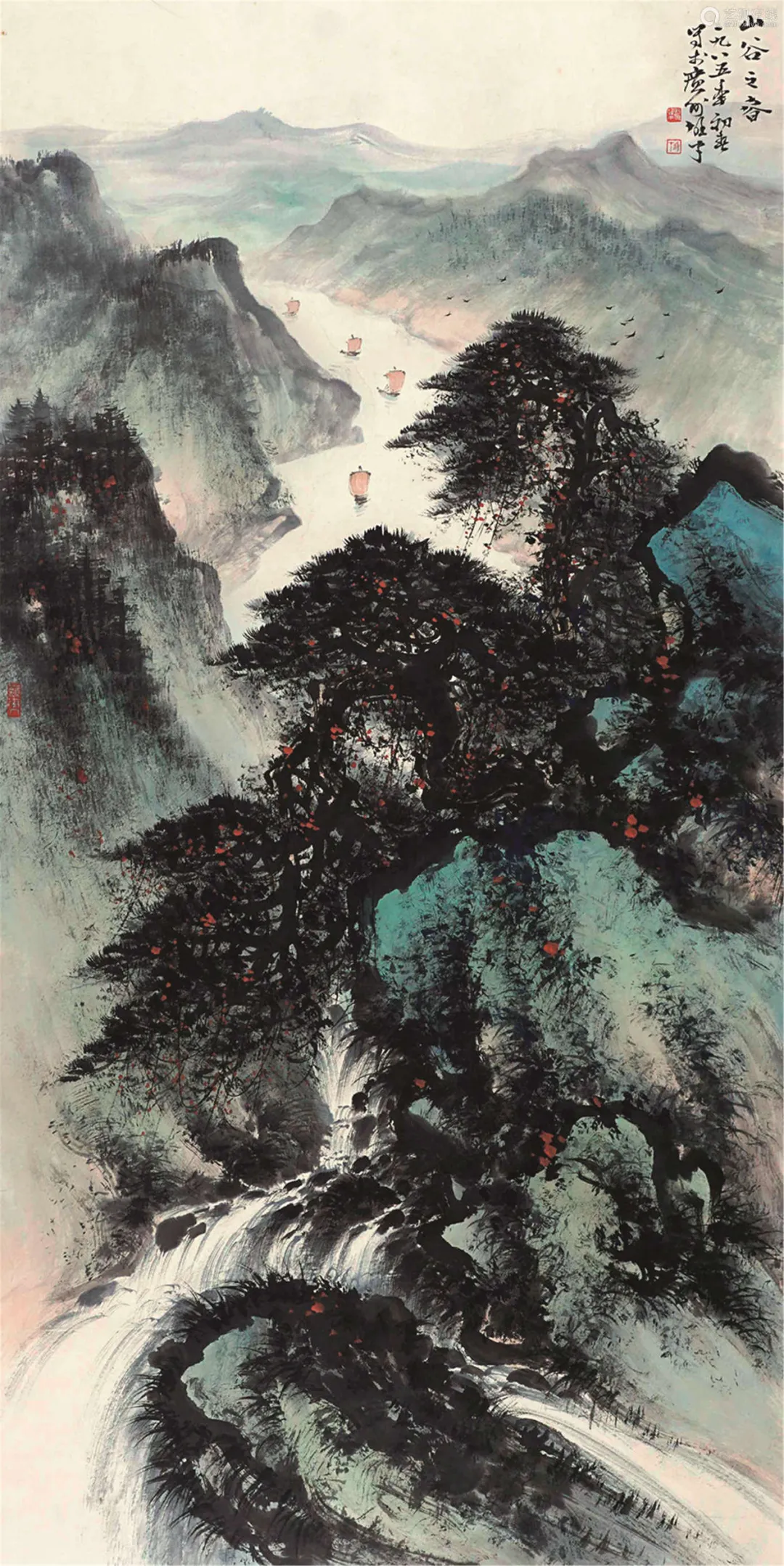
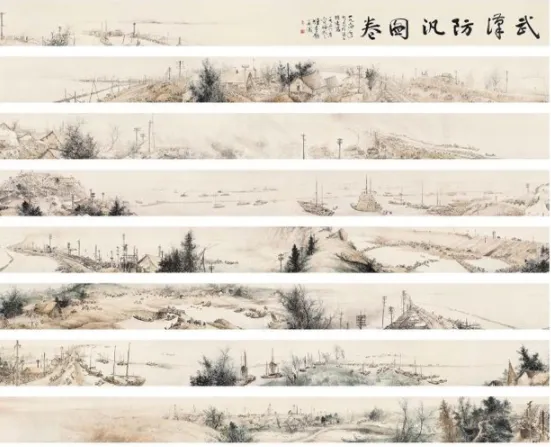
画派巨匠黎雄才,绘画成就世所共知,然书法造诣隐于画名之下,鲜为人道。实则黎氏书法亦臻妙境,因画名掩映,故未得尽显成就。黎氏深谙书画之道,笔记屡言书法于绘画之要义,谓画须取法书中执笔、运腕、法度与精神。此理不止笔记见,亦贯穿其画作。其笔墨线条,尽显书法功底,神韵自生。画成多附长题,既助解画意,亦与画面相得益彰,书画文辉映,意蕴深厚。
黎雄才书法造诣深厚,精研书艺,撰《书法笔记集》,择录历代书论,取舍有度,见其独到之识。其书作,无论题款或独立成篇,皆存临古痕迹。小楷学钟繇,隶书临汉碑,章草仿皇象,成就卓然。虽晚年古意稍减,然大字书法仍显雄强豪迈,气势磅礴。黎氏书法,楷书散淡闲雅,长草厚重灵动,晚年大字跌宕奇崛,风格独特。书路宽广,随境而创,书画相得益彰,技艺精妙,修养深厚。其法启迪良多,堪为楷模。
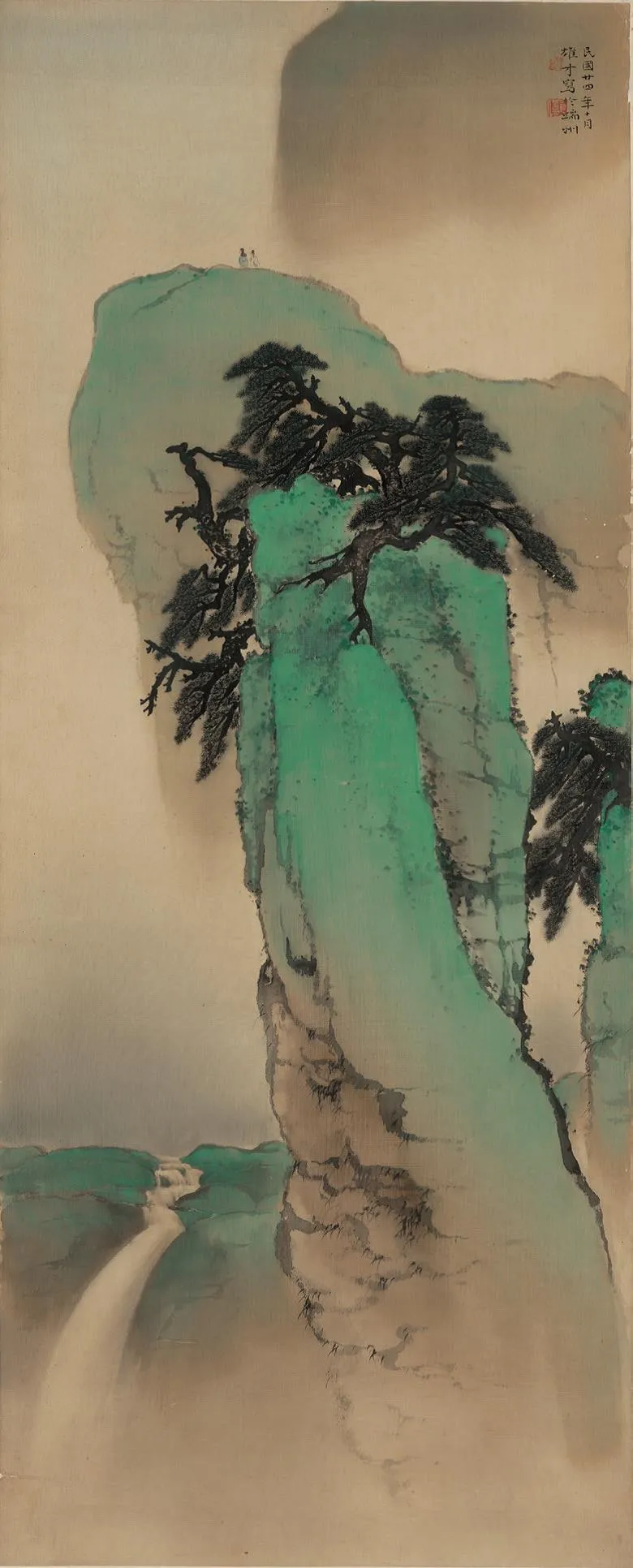
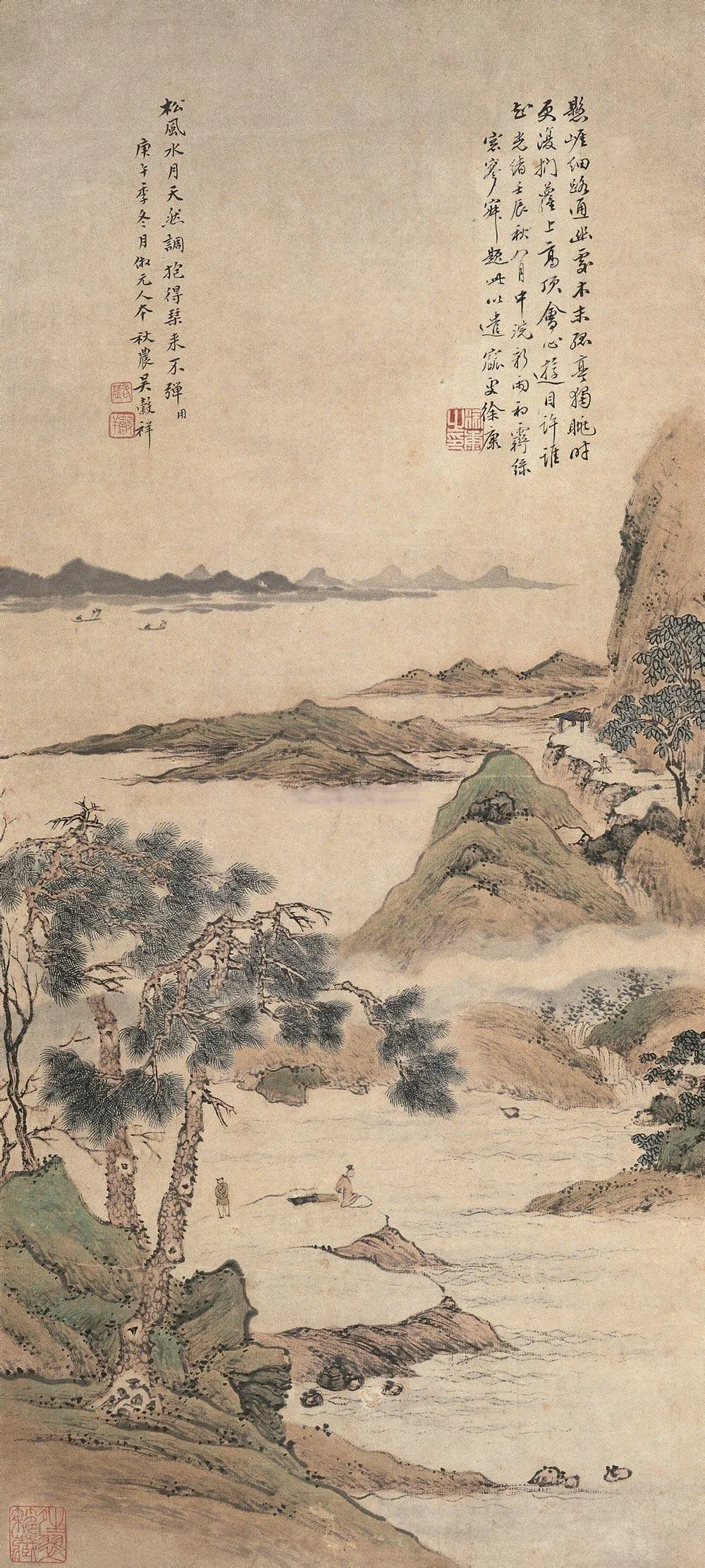
Translation
Li Xiongcai: Majestic Peaks in Serene Landscapes, Pioneering His Own Path with Subtle Charm
Li Xiongcai was born in Gengxu Year (1910) in Zhaoqing, Guangdong, and hailed from Gaoyao. A major figure in the Lingnan School of painting, he showed artistic talent from a young age and graduated from Guangzhou Liefeng Art School. His paintings, characterized by their grandeur and distinctive style, especially excel in large-scale landscapes and depictions of birds, flowers, and insects, earning the title "Li Family Landscapes." Influenced early on by Gao Jianfu, Li Xiongcai did not limit himself to his mentor's teachings but merged ancient and modern techniques to form his unique style. His bold brushwork, often using dry ink and forceful strokes, created powerful and dynamic landscapes renowned worldwide. His paintings often depict lush green mountains and rivers, exuding a majestic and serene atmosphere, inviting viewers into a vast and immersive world. More than mere representations of nature, his works are profound artistic masterpieces that capture deep meanings, earning him a revered place in the art world.
In the realm of landscape painting, Li Xiongcai carved out his own path. During his time in Japan, he adopted the "misty style" and later integrated it with traditional Chinese techniques upon his return. His brushwork became vigorous, his shading delicate, and his compositions adeptly captured depth and atmospheric perspective. Aligning with the Lingnan School's philosophy of blending Eastern and Western styles, Li forged new directions in art, unconfined by conventional methods. His preference for robust brush techniques and varied ink applications resulted in richly textured and innovative artistic effects, creating a fresh chapter in the history of landscape painting.
In the painting "Jiangxi Travels Along the Huai River," Li Xiongcai had already developed a personal ink language, demonstrating precise control of moisture and bold brushstrokes that express his distinctive style. His landscape creations were often based on sketches from life, giving his work a sense of realism and intimacy. For example, in "Snow at Mountain Village," he skillfully used ink and ochre to evoke the atmosphere of a cold day, even if the scene wasn't one of desolation, leaving the viewer with a sense of warmth. Li's character shines through his brush, and the joy of his freehand expression is fully evident in his landscapes. "Li Family Landscapes" is not just a stylistic term but a broader concept. His depiction of green landscapes is celebrated for its refined atmosphere, beautiful forms, and vivid colors, marking the signature of "Li Family Landscapes."
Though rooted in the Lingnan style, Li Xiongcai forged his path, bringing his disciples along to create a distinct school beyond the Lingnan tradition. In his later years, he achieved new breakthroughs, blending thick green hues with coarse brush and deep ink. At eighty-four, he created "A Light Boat Passes through Ten Thousand Peaks," reaffirming his principle: "Whether bright or subtle colors, ink must dominate." On the ink draft, he layered malachite and azurite, blending colors skillfully, and his use of green grew more nuanced. The painting's scenery, bathed in soft light and mist, is rich with atmosphere. Li's efforts ensured that landscape painting transcended mere social commentary, advancing art through constant innovation. While simply signing a painting limits expression, failing to capture the full cultural essence of Chinese painting, Li could distinguish and elevate the strengths of both Chinese and Western art.
In his teachings, Li Xiongcai often advised his students: "Inherit the ancient methods; do not abandon the path of the predecessors. Yet, ancient methods should not be static and unchanging. Artistic creation must pursue purity; what you paint must resemble the subject. Chinese painting differs from photography; it must display the unique charm of Xuan paper, brush, ink, and pigments, evoking artistic emotion." Li's exploration and practice of Chinese painting, especially landscape painting, were unparalleled and innovative, establishing him as a master of his generation. His artistic achievements extended beyond China. His work "Night Rain in Xiaoxiang" won the gold medal at the International Exposition in Belgium in the early 1930s, and his 1954 creation "Wuhan Flood Control Scroll" was acclaimed as an "epic of flood control," further cementing his status in the art world. Through his exceptional skill and dedication to Chinese painting, Li became an indelible figure in the Chinese art scene.
Li Xiongcai, a master of his school, is widely known for his painting achievements, though his calligraphic prowess remains overshadowed by his reputation in painting. In truth, Li's calligraphy reached a profound level, though it received less attention due to his more famous paintings. Li deeply understood the relationship between painting and calligraphy, often emphasizing in his notes the importance of calligraphic principles in painting. He believed that painting should draw from the methods of brush handling, wrist movement, and the essence of calligraphic expression. This understanding was not confined to his notes but permeated his artworks. His brushwork and lines reveal a strong foundation in calligraphy, exuding an inherent charm. Many of his paintings are accompanied by long inscriptions, which not only aid in understanding the artist's creative thoughts but also harmonize with the composition, creating a rich interplay of painting, calligraphy, and literature.
Li Xiongcai's calligraphic prowess was profound, marked by a deep study of the art. He compiled "Notes on Calligraphy," selectively recording excerpts from various historical calligraphic treatises, reflecting his distinctive understanding of the art. His calligraphic works, whether inscriptions or independent pieces, bear traces of ancient influences. His small script followed Zhong Yao, his clerical script was modeled after Han steles, and his cursive imitated Huang Xiang, all achieving high recognition. Though the ancient style diminished slightly in his later works, his large-character calligraphy still exhibited vigorous, bold, and majestic qualities. Li's calligraphy, whether in regular script with its refined elegance or in running and cursive scripts with their dynamic and natural flow, showed a unique style. His broad approach to calligraphy allowed him to create works that were seamlessly integrated with his paintings, matching the mood and requirements of each piece. This ability, reflecting his high level of artistry and deep cultivation, serves as an inspiration and model for many.
责任编辑:苗君
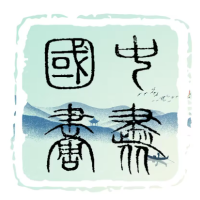
6689
有近代生命的没有约束,没有机拌,生出于自然灵动,意境丰富深远
6689
秀丽生发
用户16xxx94
[玫瑰][玫瑰][玫瑰]
6689
传颂古风意韵